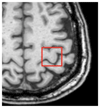GABA levels are decreased after stroke and GABA changes during rehabilitation correlate with motor improvement
- PMID: 25055837
- PMCID: PMC5435106
- DOI: 10.1177/1545968314543652
GABA levels are decreased after stroke and GABA changes during rehabilitation correlate with motor improvement
Abstract
Background and objective: γ-Aminobutyric acid (GABA) is the dominant inhibitory neurotransmitter in the brain and is important in motor learning. We aimed to measure GABA content in primary motor cortex poststroke (using GABA-edited magnetic resonance spectroscopy [MRS]) and in relation to motor recovery during 2 weeks of constraint-induced movement therapy (CIMT).
Methods: Twenty-one patients (3-12 months poststroke) and 20 healthy subjects were recruited. Magnetic resonance imaging structural T1 and GABA-edited MRS were performed at baseline and after CIMT, and once in healthy subjects. GABA:creatine (GABA:Cr) ratio was measured by GABA-edited MRS. Motor function was measured using Wolf Motor Function Test (WMFT).
Results: Baseline comparison between stroke patients (n = 19) and healthy subjects showed a significantly lower GABA:Cr ratio in stroke patients (P < .001) even after correcting for gray matter content in the voxel (P < .01) and when expressing GABA relative to N-acetylaspartic acid (NAA; P = .03). After 2 weeks of CIMT patients improved significantly on WMFT, but no consistent change across the group was observed for the GABA:Cr ratio (n = 17). However, the extent of improvement on WMFT correlated significantly with the magnitude of GABA:Cr changes (P < .01), with decreases in GABA:Cr ratio being associated with better improvements in motor function.
Conclusions: In patients 3 to 12 months poststroke, GABA levels are lower in the primary motor cortex than in healthy subjects. The observed association between GABA and recovery warrants further studies on the potential use of GABA MRS as a biomarker in poststroke recovery.
Keywords: GABA; constraint-induced movement therapy; magnetic resonance spectroscopy; rehabilitation; stroke.
© The Author(s) 2014.
Conflict of interest statement
The author(s) declared no potential conflicts of interest with respect to the research, authorship, and/or publication of this article.
Figures





References
-
- Duncan PW, Lai SM, Keighley J. Defining post-stroke recovery implications for design and interpretation of drug trials. Neuropharmacology. 2000;39:835–841. - PubMed
-
- Krakauer JW. Motor learning: its relevance to stroke recovery and neurorehabilitation. Curr Opin Neurol. 2006;19:84–90. - PubMed
-
- Sanes JN, Donoghue JP. Plasticity and primary motor cortex. Annu Rev Neurosci. 2000;23:393–415. - PubMed
Publication types
MeSH terms
Substances
Grants and funding
LinkOut - more resources
Full Text Sources
Other Literature Sources
Medical

